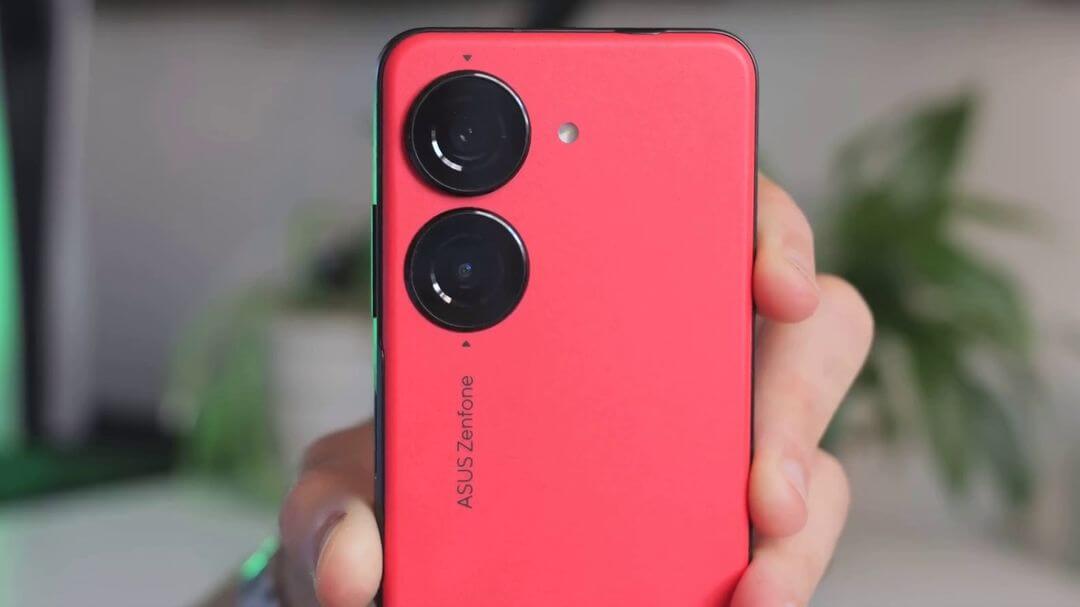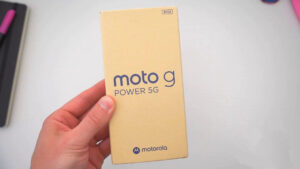Asus Zenfone 10 Review: Not Always Bigger Size Means Better!

The Asus Zenfone 10 is indeed an unusual smartphone that offers a smaller screen size combined with impressive technical specifications. Despite not boasting flashy or groundbreaking features, it presents itself as a standard smartphone with an attractive design, capable camera, and outstanding performance, all while maintaining a compact form factor that won’t occupy excessive space in your pocket.
There are various reasons why the Asus Zenfone 10 is relevant and appealing to certain buyers. First and foremost, some users simply prefer more compact smartphones. They value portability and the ability to operate the device comfortably with one hand. For these individuals, a smaller screen size, such as the 5.9-inch display on the Zenfone 10, is a desirable feature.
No products found.
In an era where larger smartphones dominate the market, one might question the necessity of a device like the Asus Zenfone 10. However, even though it may not break popularity records, it undeniably holds a significant place in the market.
Asus Zenfone 10: Video Review
| Specs | Asus Zenfone 10 |
| Procesor | Snapdragon 8 Gen 2 |
| GPU | Adreno 740 |
| RAM and Storage | 8GB/128GB, 8GB/256GB, 16GB/512GB |
| Operating System | Android 13 |
| Display | 5.9-inch 120Hz (up to 144Hz in game) AMOLED 1080 x 2400 |
| Front camera | 50MP 6-axis Hybrid Gimbal Stabilizer 2.0, f/1.9 + |
| 13MP, f/2.2, FOV 120° | |
| Front camera | 32 Mpix, f/2.5, ~25 mm, RGBW Quad Bayer |
| Ports | USB-C and 3.5mm audio jack |
| Connectivity | 5G, 4G LTE, Wi-Fi, Bluetooth, NFC |
| IP Rating | IP68 |
| Dimensions | 2.7x5.8x0.4 inches (68.1x146.5x9.4 mm) |
| Weight | 6.07 ounces (172g) |
| Colors | Midnight Black, Starry Blue, Aurora Green, |
| Eclipse Red, Comet White |
Design
The Asus Zenfone 10 is undoubtedly a compact device when compared to other smartphones in the market. Even in comparison to the iPhone 13 Pro, which is not considered oversized, the Zenfone 10’s dimensions of 68.1 x 146.5 x 9.4 mm make it noticeably smaller. This compactness translates into a device that feels like a trifle in hand, offering excellent comfort for both one-handed and two-handed use.
The construction of the Zenfone 10 is commendable, with a well-made body that exudes quality. Its aluminum frame, painted in a sleek graphite color, provides a sturdy skeleton for the device. The integration of a sheet of Gorilla Glass Victus on the front adds a layer of protection to the display. The back of the frame features convex sections, likely covered with alcantara or a similar material, further enhancing the device’s grip and comfort.
The camera modules are placed within two metal islands or frames on the back of the device, accompanied by an LED flash. The arrangement of buttons and elements on the frame follows the standard convention, with the power and volume buttons positioned on the right side. Microphones are located on both the top and bottom frames, while the lower frame houses the nanoSIM slot and port for connectivity. An interesting inclusion, especially in high-end smartphones, is the presence of a 3.5 mm headphone jack, conveniently placed on the upper frame.
Asus has opted for a cleaner aesthetic on the back of the Zenfone 10, foregoing excessive branding and lettering. However, a new Zenfone logo can be found in the bottom right corner of the phone, subtly emphasizing its identity.
Display
The Asus Zenfone 10 features a flat display with a relatively wide black frame. The screen has rounded corners and a resolution of 1080 x 2400 pixels, resulting in a pixel density of 445 pixels per inch (ppi) despite its smaller diagonal size. The front camera is located in the left corner of the screen.
The Zenfone 10 employs an AMOLED panel, which offers vibrant colors and deep blacks. Under normal circumstances, the panel has a refresh rate ranging from 60 to 120 Hz. However, when playing content at maximum settings, the refresh rate can increase to 144 Hz. Interestingly, when the smartphone is set to high-performance mode, or automatically switches to it, the refresh rate remains fixed at 120 Hz.
Asus includes the Splendid module in the Zenfone 10, a feature familiar from their other devices. This module is responsible for displaying colors and offers five different color profiles. The Standard profile corresponds to the sRGB color space, while the Cinema profile is aligned with DCI-P3. The Natural and Optimal profiles prioritize visual appeal over adherence to strict color standards.
The screen of the Zenfone 10 is readable in various lighting conditions. Asus specifies a peak brightness of 1100 nits, although in continuous usage, the brightness usually reaches around 800 nits. The smartphone supports HDR10+, HLG, and WCG (Wide Color Gamut). However, at the time of the review, there was limited content available that could utilize these features. Streaming services such as YouTube did not have full support for HDR10+ and other advanced features. It is expected that this situation will change after the Zenfone 10’s release and subsequent certification by these services.
Performance
The Asus Zenfone 10 is a powerful performer, equipped with top-of-the-line hardware like the latest Snapdragon 8 Gen 2 chipset. It offers impressive specifications such as up to 12GB of RAM and up to 512GB of UFS 4.0 storage. Despite its compact size, the Zenfone 10 doesn’t compromise on performance and can hold its own against larger devices.
In standard mode, the Zenfone 10 performs admirably, offering comparable performance to other devices in most everyday scenarios. However, in more demanding tasks, such as intensive workloads or gaming, it may fall slightly behind in CPU and GPU capabilities. That being said, the difference is usually not noticeable unless you engage in resource-intensive activities.
One notable feature of the Zenfone 10 is its high-performance mode, which allows it to match the performance of devices equipped with the Snapdragon 8 Gen 2 chipset, often touted as the fastest in the Android ecosystem. Asus has fine-tuned the software to maximize the device’s potential, making it one of the fastest small flagship Android phones available.
The Zenfone 10 runs on Android 13 with the ZenUI overlay. By default, ZenUI closely resembles stock Android 13, but with the option to enable modifications, you gain access to additional features such as a customized shutdown menu, enhanced sound control, quick access icons, and a side screen bar. While ZenUI may not be as visually sophisticated as Samsung’s One UI overlay, it offers functional and snappy performance.
Connectivity-wise, the Zenfone 10 is a modern smartphone equipped with 5G capabilities, LTE with band aggregation, and a Wi-Fi 7 system. It supports NFC, allowing for Google Pay or HCE contactless payments, and Bluetooth 5.3 for seamless pairing with accessories. The device also offers comprehensive navigation options, including A-GPS Dual Band, GLONASS, GALILEO, BeiDou, QZSS, and NavIC. Navigation performance is quick and accurate, providing a reliable experience.
Camera
The Asus Zenfone 10 features a dual-camera setup on the back, which is similar to the configuration seen in the previous year’s model. It consists of a 50MP main sensor with a 6-axis Hybrid Gimbal Stabilizer 2.0 and a 13MP wide-angle lens with a 120-degree field of view. The front-facing camera utilizes a 32MP RGBW sensor, which pixel bins to produce an 8MP final photo.
The wide-angle lens incorporates pixel merging technology and is equipped with reliable autofocus and optical stabilization using a gimbal. In video modes, it also employs electronic stabilization. On the other hand, the ultra-wide-angle (UWA) camera uses a conventional sensor without stabilization or autofocus capabilities.
In daylight conditions, the quality of photos captured by the Zenfone 10 is generally good, as long as the tonal range of the scene falls within the sensor’s capabilities. However, the wide-angle lens often suffers from reduced sharpness, particularly in the center of the frame. Image aberrations and distortions are also noticeable. In contrast, the main camera performs better, delivering photos with good sharpness and moderate noise levels. The x2 zoom is achieved through cropping the sensor and generally produces satisfactory results. Larger close-up shots, however, may exhibit poorer performance, despite Asus’ claims of enhanced x4 zoom and improved image processing at the level of RAW files.
In low-light conditions, the cameras perform decently, with the main camera exhibiting better results compared to the UWA lens. The presence of artifacts is moderate, except for a significant amount of flare in ultra-wide-angle shots, which is a common issue with this type of lens. It’s worth noting that the night mode does not support zoom functionality and is limited to photos taken at the optical focal lengths.
Portrait mode is available for both the front and main cameras. The main camera accurately detects the subject and effectively blurs the background, resulting in convincing bokeh effects.
The Zenfone 10 offers rich video capabilities, including stabilized 8K recording at 24 fps, 4K and FHD recording at 30 fps with HDR (High Dynamic Range), and 60 fps without HDR using the main camera. The UWA lens supports FHD recording at 30 and 60 fps without HDR. One of the notable features of the Zenfone 10 is the main camera’s gimbal stabilization, which works in conjunction with adaptive electronic stabilization. This combination dynamically crops the frame from the sensor to achieve a stable image, even at the highest resolutions. However, the more aggressive electronic stabilization, known as HyperSteady, is only available for FHD recording, as it requires larger margins for stabilization.
Asus Zenfone 10: Battery
The Asus Zenfone 10 is equipped with a 4300mAh battery, which is quite impressive considering the compact size of the device. In the PCMark Battery test, it achieved an average result of 11 hours and 37 minutes, indicating decent battery life.
In real-world usage, the Zenfone 10 performs quite well. With my personal usage pattern, I found that I only needed to charge the device every two days. Even with slightly more intensive usage, the battery lasted a full day without any issues.
When it comes to charging, the Zenfone 10 supports fast charging but falls within the average range in terms of speed. The included Asus cable can handle a maximum power of 30W using the Hypercharge/Power Delivery standard, while wireless charging is supported up to 15W. A full charge typically takes around 75 minutes using the provided charger.
The Zenfone 10 offers two interesting features to extend battery life. The first is the option to set the maximum charge level within a range of 80-100%. This allows users to limit the battery charging capacity, which can be beneficial for long-term battery health. The second feature is a two-stage charging slowdown, where the charging power varies depending on the charger used.
Asus Zenfone 10: Conclusion
I really liked the Asus Zenfone 10! It impressed me with its compact size, elegant design, high performance, excellent screen and sound quality. In addition, the price of the device is attractive.
I consider the Zenfone 10 to be one of the most exciting smartphone launches of the first half of 2023. Asus has made an effort to stand out from the competition, and it looks like they succeeded to some extent. With future updates and improvements, the Zenfone 10 could become an even more compelling option in the market.
No products found.
Overall, the Asus Zenfone 10 offers a compelling package for those seeking a smaller-sized smartphone with powerful specifications. It may not set popularity records, but it fills a niche in the market by providing a reliable, feature-rich, and pocket-friendly device.
You can also check out the best-selling Smartphones on Amazon:





















